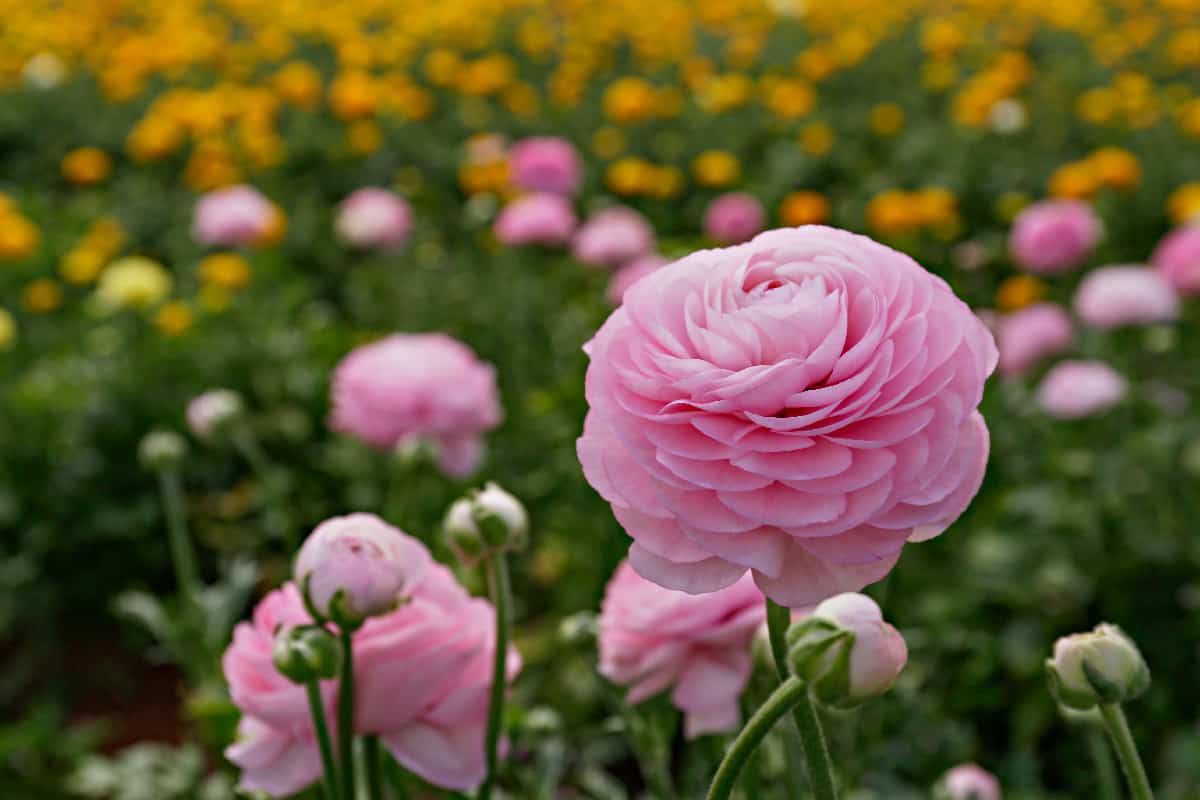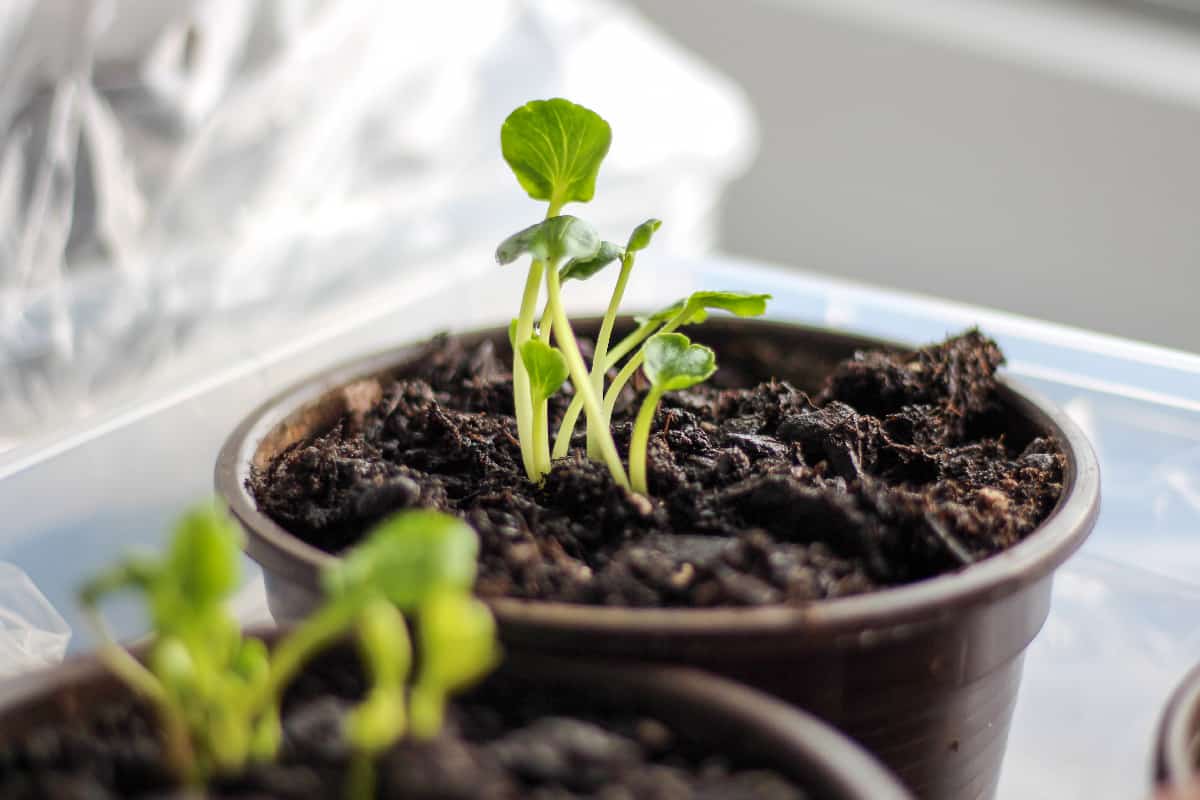Growing flowers can be a fantastic, rewarding activity to engage in. Though the process can be complicated depending on the type of plants you choose to nurture, many people will agree the beautiful flowers are well worth the effort. However, it can be hard to find enjoyment in the process when dealing with stubborn plants. In this post, we will discuss non-sprouting ranunculus corms.
There are many possible explanations for why ranunculus corms may not be sprouting when you expect them to.
Because these plants start as dormant, it can be tricky to activate them correctly. Even if it is done correctly, numerous factors, such as temperature and moisture, can contribute to failure to thrive.
Activating the corms correctly and having the right temperature and moisture are a few things you can do to try to ensure they will grow well. However, they are also a few other factors to take into consideration for these flowers.
Throughout this post, we will discuss everything you need to know about activating and caring for corms.
Activating Dormant Corms
One reason ranunculus corms may not be sprouting is that they start as dormant. To help your corms grow faster and easier, they need to pre-sprout. This is a specific process that should take place about two weeks before you will plant them.

If this pre-sprouting process happens, the ranunculus corms will sprout around three weeks earlier than corms that did not receive this treatment.
The good news is pre-sprouting the corms is relatively easy. All you need to do is soak the corms in a water bucket, ensuring the water temperature never exceeds 55 degrees Fahrenheit.
They must stay in this water for four hours, and the water must be aerated. This means you will need either a water pump or a continuous stream of water, or you will need to change the water every hour.
Pre-Sprouting

After soaking in the water, you can plant the corms in a small container with some moist soil. The ideal temperature during this stage is around 50 degrees Fahrenheit.
The corms should take about two weeks to form roots and sprout. After pre-sprouting like this, they should be moved outside to their permanent location.
The outside location for ranunculus corms should have plenty of sunlight. If temperatures allow, the young pre-sprouted plants should be exposed to direct sunlight and wind.
However, if there is any chance of frost or freezing temperatures, the plants should be covered to protect them. You can cover them with soil or use a plant cover.
Potential Issues
If this pre-sprouting process is not something you did with your corms before planting, this could be why they are not sprouting.
However, it is possible to get ranunculus corms that have already been pre-sprouted, or you may have done the process yourself and still are not seeing results.
In these instances, it is important to note how sensitive these flowers can be. They have very specific needs that be easily messed up.
If you are waiting for the corms to sprout after soaking them, there are a few factors you can check that may be causing the problem.
Corms that still look healthy but are not sprouting may be in soil too dry for them. The soil should be somewhat moist, but this can be tricky to balance as too much moisture will easily cause them to rot.
Two other details that could be creating problems are temperature and light. During this pre-sprouting phase, the plants need to be kept in a place with no light.
Light of any kind, artificial or natural, during this stage will cause issues with these flowers. If they are not in total darkness, they will not grow.
Also, the temperature needs to stay within a specific range. Too cold or too hot will kill the corms easily.
What Time Of Year To Plant Ranunculus?

Though ranunculus corms need complete darkness to sprout initially, these flowers require a great deal of sunlight once outside. The need for sunlight and the importance of warm temperatures make the ideal time to plant ranunculus in the spring or fall months.
These time frames make it more likely the plants will get enough sun while also not worrying as much about potential frost or low temperatures.
Another thing to consider when choosing the best time to plant is when the flowers will bloom. Ranunculus typically will bloom about three months after sprouting.
This means you will have gorgeous flowers in full bloom during the summer if you choose to plant them in the early spring. Planting in late fall will give you flowers in the early spring, around March.
What Happens If Ranunculus Are Planted Late?
If ranunculus corms are planted outside too late in the season, they most likely will not make it.
If you plant them too late in the fall season, the weather could turn too cold for them and cause them to rot in the ground.
Planting them too late in the spring means temperatures could get too high, and they will not be able to produce any blooms.
In addition to finding the right time of year to plant ranunculus, you need to ensure you do not wait too long after the corms are soaking in water. Leaving the corms out after soaking without properly planting them can lead to them going bad.
Luckily, there are a few things to do to help preserve them if you cannot plant them immediately.
If you need more time between soaking and planting the ranunculus corms, you can either plant them in a greenhouse or store them.
To store the corms, you can place them in total darkness with a temperature range of 38-40 degrees Fahrenheit. This will only give you an extra couple of weeks before they will have to go in the ground.
The greenhouse option may initially sound impossible for you depending on your setup. However, they are more accessible than you may think.
There are options for pop-up greenhouses that are relatively inexpensive. Investing in one of these and planting the corms inside will give you plenty of extra time before finding a more permanent location for these flowers.
Can You Plant Ranunculus In A Pot?

After all this discussion about how sensitive ranunculus corms can be, you may wonder if it would be easier to keep them inside or if this is even possible.
The answer is yes; you can grow ranunculus in an indoor pot without issues. You must meet specific criteria to ensure the corms will sprout and grow indoors.
As long as the pot you get is a couple of inches deep, it should be plenty for the ranunculus. The depth of the pot is not quite as important as the other needs of this flower.
It will be essential to make sure this plant only gets the amount of water it needs. Too much or too little will be disastrous.
The pot will also need to be in a place with tons of light, and in a cooler part of the house so they do not overheat.
Summary

Ranunculus are a more difficult flower to grow than others, but the beauty of their blooms is usually well worth all the hassle.
The longer you work with this plant, the easier it will be to manage the delicate balance of temperature, moisture, and light they need to grow.
Having ranunculus corms that struggle to sprout can be frustrating, but the stunning flowers make up for it.
For more information on similar flowers, check out these posts:


